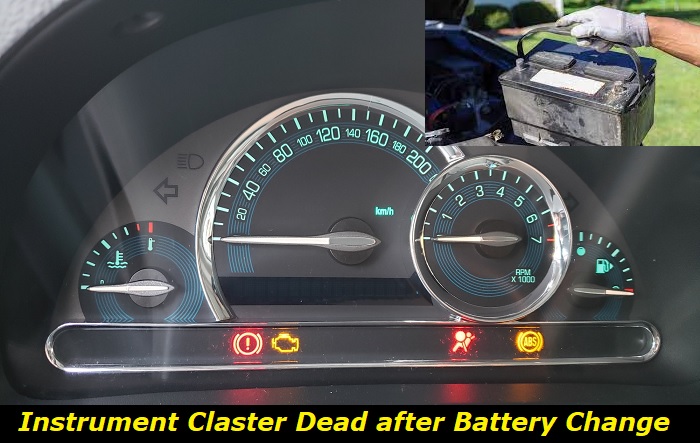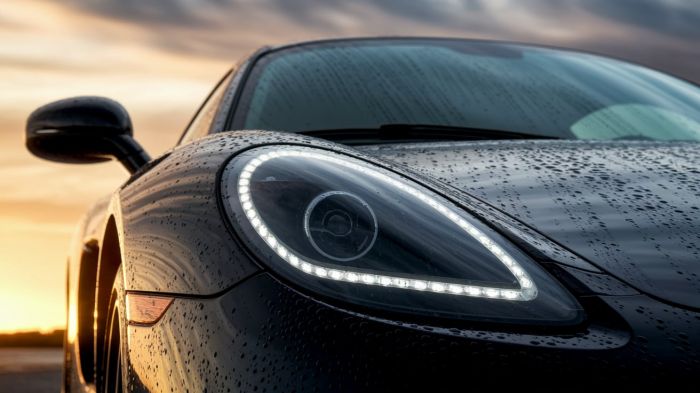If you own a classic car or a car that is considered old in today's standards, chances are you have changed its battery several times. The process of changing the battery has never been an issue because all you had to do is insert the new battery, and life continues. For those who have newer vehicles and their car batteries have died, replacing them comes with some unique challenges.
Dead car battery replacement highlights
- Critical voltage:less than 10 volts
- Average battery age:4-5 years
- Tools needed:set of wrenches
- Timeneeded:15 minutes
- If done incorrectly:electronic glitches, frying ECU, no crank-no start
- DIY fix:possible
- How much to fix?$150 - $250

Instrument cluster not working after dead battery
Owners of Mercedes Benz, BMW, Chevys, Ford, Toyotas, and other brands have reported encountering an instrument cluster problem when they replaced the battery. The problem is generally exhibited by a blank instrument cluster. All the gauges, including the speedo, the fuel gauge, the temperature indicator, and the RPM gauge, all go blank. Sometimes, the radio will die alongside the earlier mentioned.
In some instances, you might encounter issues with the speedometer alone after replacing a dead battery. The issue affects the headlights in some cars, and for others, the A/C may fail on you. For some car owners, the instrument cluster will light up without apparently doing anything. It is imperative that you resolve the instrument cluster issue as soon as possible, as driving your car with this fault can be dangerous and cause further damage to the car.
The instrument cluster not working after a dead battery can be caused by any one of the various factors discussed below. The one thing to note is that the diagnosis process is important if you are to resolve this issue. Sometimes, you will need to apply somewhat unorthodox tricks to solve this problem. Let us now discuss the various possible causes of this problem and the solution to each cause.
Causes of instrument cluster not working after dead battery
1) Incorrect connection of the battery
This is a common problem with novice drivers. When connecting the new battery, you may unwittingly connect the cables backward. That is, rather than the negative cable going to the negative terminal, it goes to the positive terminal. When the battery is connected the wrong way, a big spark will be observed. Even if you connect the battery for a second, there is a high chance some parts or systems will get fried. One of the parts that can be affected is the instrument cluster, which will fail to work completely.
Solution
The first thing to do when you discover you have connected the battery incorrectly is to disconnect it. The fuse for the instrument cluster is the most likely victim in a case where it goes dark on startup. The fuses are located under the hood or under the dashboard. But the user manual of your vehicle should help you with this.
If a blown fuse is not the cause for the instrument cluster going dark, it is time to conduct a thorough diagnosis. It should be done by a professional who should check whether the cluster is fried. The other places to check are the fusible links going to the cluster. The entire wiring from the CAN bus or the BCM to the instrument cluster should be checked before deciding to replace the cluster.
2) An electric spike
After removing the old battery and connecting the new one, you may notice a change in how the vehicle behaves. For some drivers, the vehicle sensor for the accelerator will blow, while for others, the instrument cluster will black out. When you connect the new battery, there is usually an electrical spike in the vehicle. This spike can cause the instrument cluster to act abnormally. This electrical spike is also observed when you jumpstart your car.
Solution
The answer to this problem is simple: disconnect the battery and wait for a few hours. During this period, the ECM will reset, and the instrument cluster gauges will start working. You can also resolve this problem by disconnecting the negative cable to the battery and stepping on the brake pedal for a moment. This latter solution has been seen to work for many drivers who have had their car's speedometer fail after a battery change.
3) Borderline voltage in the battery
For the battery to operate as intended, a certain voltage has to be present. For example, when the engine is on the move, the battery should give a higher reading than when it's off. A problem with the battery voltage can cause the instrument cluster and the steering controls to fail in some vehicles.
Solution
If you suspect the battery voltage to be the issue, you should carry out a voltage load test. The voltage load test should be done using the right tools, and in most dealerships, this service is free. The voltage when the engine is idling after starting should be 14.5V. The voltage when the car is cranking should be 11V, and when shut down, it should be 12.5V.
4) Blown fuses and continuity problem
As mentioned earlier, a new battery can cause an electrical surge. In this case, the spike can blow fuses and even some electrical connectors. You will get the best answer for the issue when you conduct a proper diagnosis using an OBD II scanner. In almost all instances where the instrument cluster is not working, the P0030 trouble code will be shown.
Solution
Check the BCM fuses first. For some vehicles, the HVAC/ign fuse is the one that supplies the instrument cluster. You should also check the maxi fuse, normally found next to the battery. In some instances, it is easy to determine whether a fuse is blown or not, and sometimes, you will need a dedicated procedure. Sometimes, pulling the related fuse and letting the cluster reset has been seen to work. At the same time, you can erase the trouble codes and see whether the problem will go away.
Where you are unsure, check for continuity in all the BCM fuses. You can also check whether the fuses are the cause of the problem by replacing the fuses with known good fuses of equal amperage. When you find the fuse to make the cluster work, replace the affected fuse, and you are good to go. If the fuses are good and the continuity of power is checked, establish whether the ground locations for the car are correct.
5) A blown instrument cluster
Sometimes, the problem may be the instrument cluster itself that is the issue. The cluster may be damaged either because it became shorted when you were replacing the battery or jumpstarting your car.
Solution
A faulty instrument cluster is very difficult to repair because its motherboard is simply a maze. When one part of the instrument cluster malfunctions, chances are the rest will not work; this is especially true if it's an electrical fault.
To resolve this issue, you will need to buy an instrument cluster, preferably a used one. This should be done after checking the wiring harness behind the cluster, the associated fuse, and the continuity to the CAN bus or BCM. When you buy a new cluster, connect it and see whether it's reading. If it does, don't drive the vehicle but rather take it to the dealership, where it should be zeroed and then coded to the car.
6) The instrument cluster is 'confused'
Sometimes, the instrument cluster can get confused when you replace a dead battery with a new one. This has been observed especially in Chevy Cavalier. Some car owners have seen the gauges stop working after a dead battery or after jumpstarting their cars. The lights can refuse to go away even after the ignition key has been removed from its slot. In other situations, the gauges and other instrument cluster indicators simply die. In many cases, disconnecting the battery for 30 minutes will reset the computer, and the problem will go away. In other instances, the instrument cluster will remain unresponsive.
Solution
The solution to this problem is simple. If, after disconnecting the battery for 30 minutes, it doesn't work, you will need to play with the fuses to resolve the issue. You should first put the car in the ON position. The engine should not be running. Go to the fuse box and start pulling and replacing the fuse while the ignition is still in the ON position. In most cases, when you pull the BCM/CLU and cluster fuses in that order, the instrument cluster will come back to life.
Conclusion
When the instrument cluster stops working after a dead battery experience, you should be open-minded and patient. In many cases, it is unnecessary to rush to the dealership to have the issue resolved. For many people, trying some of the above tricks has seen them avoid making that trip to the dealership and save quite some money.
About the authors
The CarAraC research team is composed of seasoned auto mechanics and automotive industry professionals, including individuals with advanced degrees and certifications in their field. Our team members boast prestigious credentials, reflecting their extensive knowledge and skills. These qualifications include: IMI: Institute of the Motor Industry, ASE-Certified Master Automobile Technicians; Coventry University, Graduate of MA in Automotive Journalism; Politecnico di Torino, Italy, MS Automotive Engineering; Ss. Cyril and Methodius University in Skopje, Mechanical University in Skopje; TOC Automotive College; DHA Suffa University, Department of Mechanical Engineering






Add comment